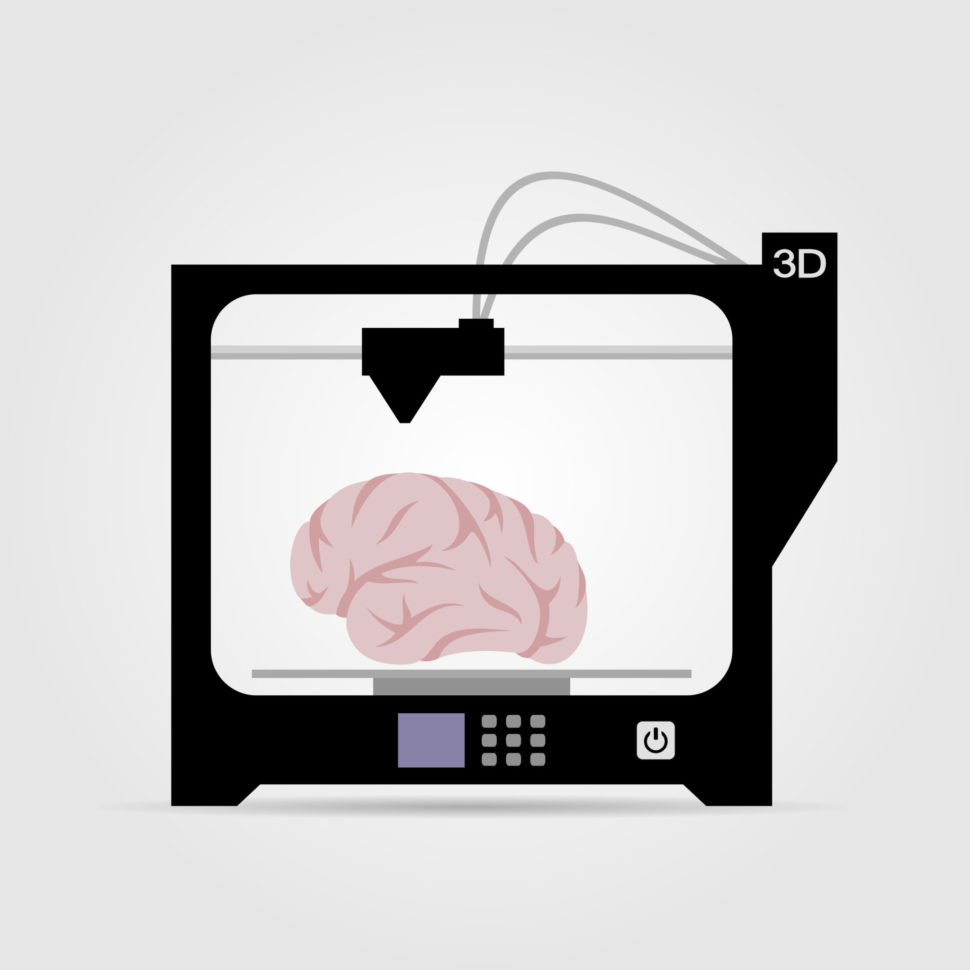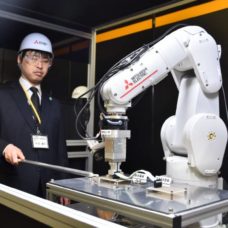Among the coolest of future techs, 3D printing will democratize many industries. What we want to know is: how long til we can create Westworld-style human replicas on a whim?
3D printed parts can build airplanes and give life to artificial organs. However, until recently, we were unable to print specific kinds of bio-compatible materials. This limits the ability to create certain artificial human organs. Soft tissue, specifically brain tissue, is one of these materials.
Read More: 5 Industries 3D Printing is Changing
Building on previous research done by other universities, a new group provided a bioprinting breakthrough. Have researchers finally cracked the secret to 3D printing new bodies?

Australian Researchers in Wollongong Used Stem Cells
Last year in July of 2017, University of Wollongong researchers developed a bioink. Using this bioink, they were able to 3D print soft tissue. The trick lay in human-induced pluripotent stem cells or iPSCs.
Essentially, the iPSCs can divide and replicate after the bioprinting and then replace tissues in the body. You can even pull these stem cells from a patient’s own body and use them. It is almost like an organ farm, but not in a creepy way.
As seen with other 3D printing endeavors in the medical world, rejection is a serious concern. Lab-grown tissue is just one more way to mitigate rejection risk. It uses tissue from a transplant patient in order to do this.
So, it follows that incorporating this tactic into the 3D bioprinting process helps.
The ARC Centre of Excellence for Electromaterials Science (ACES) wants to use this for brain illness and injury treatment. Associate Professor Dr. Jeremy Crook also said that 3D printed brain tissue has more applications.
They can develop healthy and unhealthy or diseased tissue for research purposes. Using this for tests, better medicine can be developed to treat illnesses. In turn, transplanting or restoring damaged organs or tissue is also possible.
But the breakthrough the Wollongong researchers had in 2017 was not quite “all there”.
Printing Uniform Brain Cells Does Not Make a Whole Brain
As Dr. Crook elaborates on 3DPrint.com, these researchers 3D printed brain cells using stem cells. They were able to create a tissue that creates neurotransmitters which could help Parkinson’s patients.
They also generated “support cells” known as neuroglia with applications for epilepsy, schizophrenia, and other ailments. The above video talks about this discovery in a bit more detail.
The 2015 breakthrough revealed that neurons could grow, laying the groundwork for the 2017 breakthrough.
But in order to 3D bioprint a full brain, researchers need to crack how to print the other regions of the brain. After all, there are around 86 million nerve cells in the brain. We are only just beginning to understand the complexity of the human brain.
The bioink is a composite hydrogel which still needs scaffolding by bioengineers, too. So that is one more limitation of current technology.
Despite this, another team had a breakthrough taking us closer to 3D printed brains.

3D Printing Uses Bioink For Bioprinting to Create Soft Tissue
Researchers at the Imperial College London further experimented with bioprinting. The NCBI article from Hao-Wei Han and Shan-hui Hsu details the process.
The difference between this research and the Wollongong research involves the softness.
These structures that Imperial College London researchers generated were soft enough to imitate organ procedures. That means that the softness of them allows for mimicry of lung and brain properties.
The 3D printed structures form “scaffolds”, acting as a template to regenerate tissue. Then, damaged tissues are naturally encouraged to grow, repairing the tissue. This also involves something called “seeding” cells to encourage growth.

You can also avoid normal issues with transplants such as rejection with this method. While negative clinical trials are important, transplant rejection is common and frustrating.
As we covered in another story about 3D printing, taking cells from a patient decreases risk.
Pairing this with the scaffolding method makes for more effective bioprinting. Scaffolding may not be a new concept, but the process these researchers used is new.
Since the scaffolds are very soft, they can mimic the softest tissues in the body. Seeding neuronal cells means that this 3D printing process can regenerate spinal cord or brain tissue. The other aspect of this method involves cryogenics.
Dry ice cools the bioink or hydrogel ink rapidly as it comes from the 3D printer. Then, after thawing, the gel is as soft as body tissue, but strong enough to stand on its own. The cryogenics factor is what makes this unique and new.
The implications for this are numerous in the realm of brain injuries or disorders. But there is more to it than just the spectacle.

How Does This Method Take Us Closer to Printing Brains?
The question on everyone’s mind has to be: “how close are we to printing organs at home?” While we won’t be printing new livers at home soon, we are one step closer. The combination of established research and novel cryogenics makes it so.
The soft factor plus the scaffolding method are mainstays on the roadmap to bioprinting. This is outlined in the research provided by Imperial College London.
When the researchers tested their 3D printed tissues, they seeded them with other cells. Specifically, they used dermal fibroblast cells to create connective skin tissue. Since the connection was successful, this means other tissues are up for regeneration.
The initial structures were only centimeters in size, but the researchers want to replicate whole organs. The new technique, given available research, seems like a viable path.
As stated in their NCBI article, the researchers see this as a way to “accelerate the coming of the era of personalized medicine.” Democratizing once costly and time-consuming processes mean wider accessibility for all.
But does it bode ill for specialists like neurologists? Probably not. All it means is that they have one more tool in their woodshop. They might have to learn how to use it, but it won’t replace neurologists.
It does, however, mean that the 3D printing business diversifies that much more. The need for bioink or hydrogels will increase as the success rate of bioprinting increases. You can extrapolate from there how hospitals will need to update their equipment.
Will it happen by 2020? Well, we most likely won’t be 3D printing Mensa brains, but this research is sure to have traveled lightyears down its current path.
What Could We Do With Robust Bioprinting?
While we are still a decent time away from robust bioprinting, the possibilities are enough to get the transhuman futurist salivating.
We could potentially restore limbs to those who have lost them or were born without them. Perhaps we could extend this to those with limbs that no longer work? Of course, this means working with nerves and the spinal cord.
That kind of integration may yet be farther down the road for bioprinting. But the possibilities aren’t all roses and dandelions.
Pictured above is an image from the short-lived Syfy series Incorporated. The woman on the right is a doctor, but also had her ear replaced in the show. She’s a well-off character, so the replacement didn’t seem like a huge deal.
That means that people of means could come to take advantage of bioprinting.
Think about it: you’re doing something knowingly reckless and woops!

I accidentally cut my finger off playing Five Finger Fillet, but no matter. I’ll simply buy a new finger or use my own 3D bioprinter.
I’m definitely exaggerating for humor here, but you can see the potential for exploitation. And, like any commodity, it can be taken advantage of by corporations, too.



















Very interesting article, spoiled by social justice genuflecting at the very end. Please spare us the “Kerperayshuns ur eeevil!” spiel.